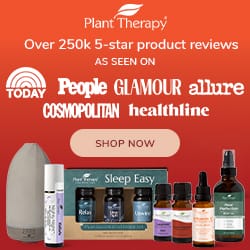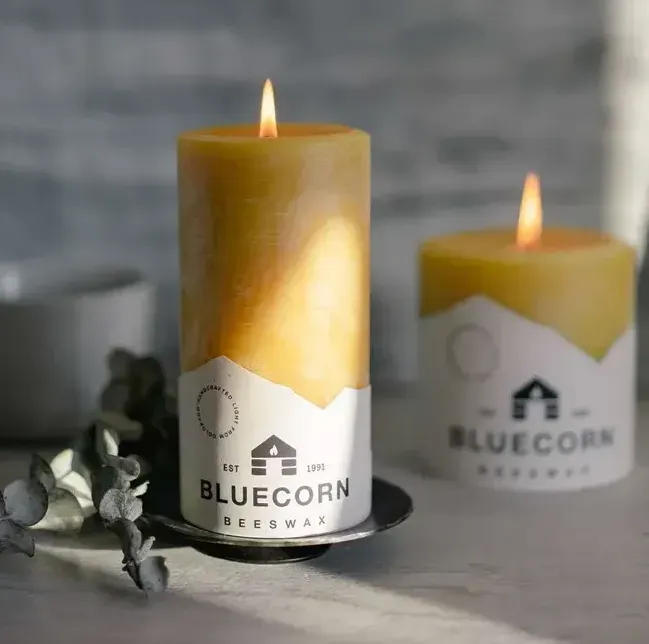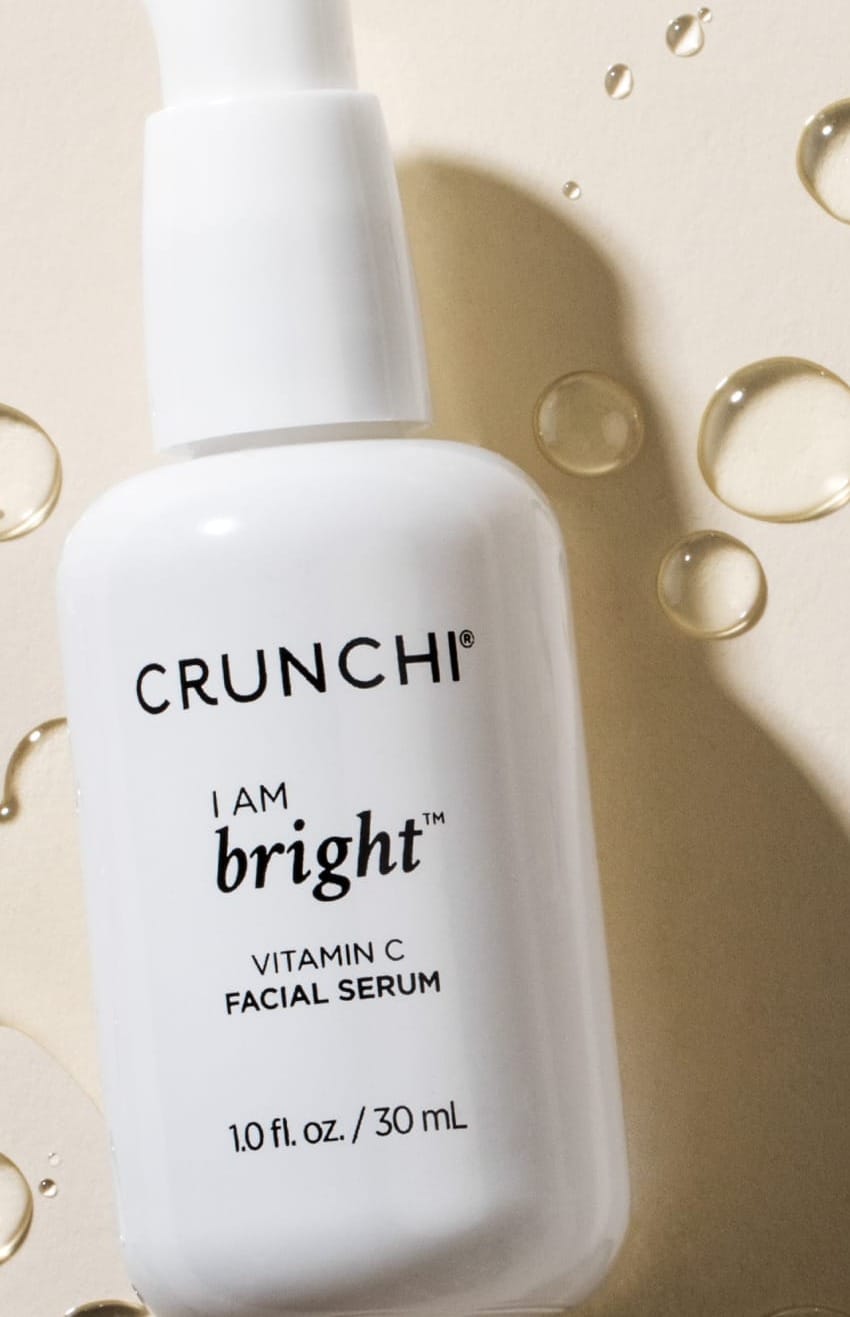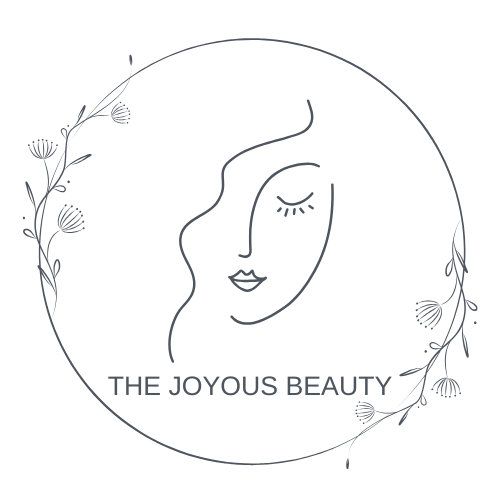5 Ingredients to Ditch in Your Everyday Beauty Products, Part 1

Author's note: Originally, I was going to squish all this information into one post, but I felt that it would be unfair to you, joyous reader, to exclude much information that would help illuminate this discussion. As such, I have decided to break this into two or three parts (yet to be determined). This is Part One.
Let's be honest a moment. When we start hearing words like "toxins", "toxic", and "hazardous for women's health", it's both concerning and confusing. On their heels often come the terms clean beauty, green beauty, non-toxic, natural, and so forth. If you were anything like me when you were initially exposed to these concepts, you felt relief that you'd found something better, but at the same time totally lost on why "the other stuff" is allowed on the shelf at all.
I've said this before, but it bears repeating. The main reason for the wide array of products and claims is how little regulation on ingredient standards and marketing in the US beauty industry. Here, anything goes.
When I began my clean beauty journey, I wished there had been a simplified way to learn a few ingredients that would help me eliminate a majority of toxic exposure when I went shopping. The information out there was (is) difficult to dig through, either because it's in scientific papers, or in long lists comprised by others who have done their own digging (good for them, too!), or posts that look at each ingredient one at a time (often more superficially than I wanted).
I want to try and simplify things a little for the beginner starting out on their own clean beauty journey. The best way to start any journey is one small step at a time. Let's narrow it down to FIVE ingredient categories to focus on eliminating from our everyday routine as soon as possible.
These are possibly the most concerning and well-researched ingredients in the beauty industry. A good place to start, right?!
Let's start with two big ones!
Category 1: Fragrance:
Also seen on a label as parfum, perfume, natural fragrance/oils, musks, essential oil blend, aroma.
Fragrances are proprietary according to industry standards. This means that they are considered trade secrets and, therefore, are protected by a legal loophole that enables fragrance companies to keep their ingredients lists hidden, probably away in a high security vault. That's how hard it is to get any kind of answer when you call or write in to ask!
The most shocking part of this information is that there are around 3,500-4,000 individual chemicals that may be used in fragrances. (Recently, I heard the number may be as high as 6,000.) I came across a TED Talk a few years ago where a fragrance expert shares his knowledge of how the scents we know and love come to be during his engaging theory of odor discussion. In it, as he's talking about the different notes within a fragrance, he reveals that one note - the "Eden note" as it's called, contained 400 ingredients. Later in the talk, he also mentions an example of a compound used in men's fragrance that is both difficult to make and a known carcinogen. (1)

My point is not to slander this doctor's work, which I think is fascinating and full of potential for creating safer scent compounds. Hence the recent surge of transparent, safe synthetic fragrance companies in the past 5-10 years!
The problem with fragrance is this: companies know that many of their ingredients are known carcinogens, endocrine (hormone) disruptors, irritants, organ toxicants, and more. In particular, phthalates may be one of the most hazardous to human health and commonplace ingredients used in the fragrance industry. They have staying power, meaning that they make the scent lasts hours or days on your skin and clothes. How many of us have smelled our favorite perfume on something we wore days ago?
They are also well-known for causing massive endocrine disruption, especially in women. They have an impact on fetal development and women's reproductive abilities. Furthermore, some phthalates are known cancer-causing agents, and may make some anti-cancer drugs less effective against tumors. (2)
Some of us may just shrug and reach for an essential oil blend instead - but wait! 70-90% of essential oils on the market are adulterated. Nor are they third-party tested for purity. The Campaign for Safe Cosmetics also cited that many essential oils have allergenicity potentials the same as synthetic fragrances. This is most likely because they are adulterated, but the FDA doesn't discriminate between a naturally-derived scent and one made in a lab. All are scrutinized the same for personal care products. (3, 4, 5)
What's a girl to do? Le shrug.
We are not without the power of knowledge! There are a couple ways we can reduce our exposure to fragrances.
- One option is to eschew all fragrances. This is particularly helpful if we're very sensitive, or find out that we are after we get rid of them for a while? Cannot walk down the laundry and cleaning supplies aisles anymore without getting sick? Yep, you're sensitive, or your body has become sensitive to that bombardment. Look for "fragrance-free" on the label.
- If we still want a fragrance option, then there are two ways to go about it. One might choose to go with an essential oil from a verified and reputable company that publishes their third party-certified pure therapeutic-grade oils, and a diffuser. Essential oils can be powerful medicines, but they also make great room fresheners.
- One might also choose to go with one of the handful of transparent clean synthetic fragrance companies on the market. (This goes for things like candles too, friend.) It pays to dig deeper than what you read on the website. Email the companies asking how they source fragrances and how do they verify that their companies use clean options. If you don't like their response, or you don't get a response, move on. If you want a fragrance-free option for a candle, try pure beeswax that's been ethically and sustainably sourced.

The point is to do due diligence when researching, to test products, and to find where you comfortably fall. Remember that fragrance is in everything. I have favorites when it comes to safe, clean fragrances. You can check out my recommendations below.
My Fragrance/Fragrance-Free Favorites
A few of these recommendations may have affiliate links or codes associated with them, where I make a small commission for sharing. As always, do your own research before buying to make certain you'll be 100% happy, but I never recommend anything I have not personally tested and experienced, usually for a minimum of three months or more.





PS: Do remember that fragrance is in EVERYTHING! Once you find one clean item to replace, move on to the next. The process will take time.
Easiest places to begin: Body and beauty products, candles and wax melts, household cleaners, and laundry detergents and dryer sheets.
Category 2: Synthetic Colorants:
Also known as Lakes or lake dyes, FD&C (Food, Drug & Cosmetics) or D&C (Drug & Cosmetics) or External D&C + a color and a number. There are many more derived from animal, plant, and mineral sources as well, including commonly seen annatto, beet root powder, spirulina powder, iron oxides, titanium dioxide, and ultramarines (natural and synthetic). (7,8)
The first time I ran into the conversation surrounding colorants, I was seven or eight. My grandmother, who was a surgery nurse nearing retirement, had a my favorite cinnamon red candies in the house. I clearly remember her coming home from work one day and telling me about how red dye caused cancer, and how quickly my favorite candies disappeared thereafter.
It was not too many months later that my grandma was diagnosed with breast cancer for the first time. Over the remainder of her lifetime, she would be diagnosed three times with this disease that took her life. Watching one of the most dear people I knew go through painful radiation treatment leaves a lasting impression, but it wasn't until many years later, even a decade or more after her death, that I realized why color additives can be problematic.
The list of allowable colorants within the USA is lengthy, complicated, and ever-changing. They are also everywhere, from the makeup we use to the medicine we put into our bodies to the foods we consume. (7, 8)
Unlike fragrance, which has that trade secret loophole, the FDA regulates all colorants found in foods (including supplements), drugs, cosmetics, and certain medical devices. Most color additives go through an approval process for each specific use and must be used only in compliance with approved uses, specifications, and restrictions. (Exceptions to this rule include coal-tar dyes, also knowns as organic synthetic dyes, used in hair dye products.) During their approval process, the safety data of the colorant is scrutinized by the FDA to ensure that it's safe for its intended purposes. It is, perhaps, the most regulated part of the cosmetic industry. (6)
There are two main categories of color additives, those that are "certifiable" and those that are not. Certifiable colorants are defined as those that are human-made and are derived from coal and petroleum sources. These include FD&C, D&C and lake dyes. In order for these to be certified, the manufacturer submits a sample from the batch for which it is requesting certification, and the FDA tests that sample to see if it meets the requirements for composition and purity. If it does, the FDA then "certifies" it and issues a certification lot number, and then it can legally be used in FDA-regulated products. (6)

The second category of colorants that do not have to go through a certification process are "exempted", and include additives derived from animals, plants, and minerals. They are not subjected to batch certification requirements, but are still considered artificial color additives and are therefore subject to regulatory requirements and safety standards. It should be noted again that the approval of a colorant for one use doesn't mean it can be used for other uses. (6)
Sounds pretty straight forward, right?
Recently, California became the first state to ban four food additives, Red 3 being perhaps the most well known. (The others are brominated vegetable oil, potassium bromate, and propylparaben.) Debates around Red 3 have raged for decades, after it was shown to have carcinogenic effects on the body in animal studies when used in cosmetic applications. The FDA banned it from cosmetic use in 1990, but have continued to allow its use in food products like candy, fruit juices, cookies, and more. In case you're wondering what this is, Red 3 is a petroleum-derived colorant turns food and drink a bright cherry-red color, a super fun pop of color to delight in when you're a child, to whom products containing this colorant are mainly marketed. (10, 14)
The FDA clearly states that it is the food industry's responsibility for ensuring that the food it markets is safe and meets all applicable FDA requirements. The FDA claims that its scientists continue to review publicly available information about the safety and toxicology of synthetic colorants to determine further and future usage, but any savvy consumer knows that it takes a lot of time for studies to be put together and completed, and the data scrutinized by panels that are often full of scientists cherry-picked for their allegiances before it disseminates into public knowledge. Although the FDA has the authority to take action against companies that don't voluntarily issue a product recall on account of improper or illegal colorants, a problem has to be known about first. Again, that may take years to come into the public consciousness. (6, 9)
With rates of ADD/ADHD rising dramatically and more cases of autism than ever being documented, concerned parents and advocacy groups alike are taking a hard look at food additives. Studies like those looking at food colorant effects on children, to whom they are widely marketed to through advertisements for cereals, candies, snacks, etc., have shown that children may be quite sensitive to them, with Red 40, Yellow 5 and Yellow 6 being the most common found on the market. It is estimated that children 2-5 years of age have a higher exposure rate to these additives due to their size, and that they consume twice the amount of dye, versus the general population. (10, 11, 14)
Many concerns stem from the fact that the federal laws surrounding color additives date back to 1960, and do not require that approved color additives ever be reassessed. That means that when physicians like Benjamin Feingold first claimed that there was a link between color additives and hyperactivity, inattentiveness, and restlessness in children in the 1970's, there was no incentive for the FDA to reconsider its stance. It's only been in more recent years as independent watch groups like the Environmental Working Group, state agencies like the Office of Environmental Health Hazard Assessment (CA), and medical groups like the American Academy of Pediatrics are all looking at the increased numbers and finding that 64% of the more than 4,000 food additives currently in use have no data on whether or not they are safe for consumption. (11, 12)

What does this have to do with the beauty industry?
Firstly, the laws pertaining to what can go into cosmetics and skincare manufactured in the US have not been updated since 1938, though there have been strides made in some areas to do so. Because this is getting long, I'll keep it short: When it comes to ingredients, the US is the Wild West. Most anything goes.
Under the Food, Drug & Cosmetics Act (FD&C Act), most cosmetics do not require FDA approval before going on the market. The law requires that manufacturers report the safety of the products to the FDA, though color additives and hair straightening products still require meeting regulations. Indeed, color additives are the most tightly regulated group of ingredients in the beauty industry. (15, 16)
As with the food industry, the burden of proof falls upon the beauty industry to provide data about the safety of their products. Because the FDA has no incentive to go back and reexamine past approved colorants, the way the data is set up gives no incentive to major manufacturers to test their products for the potential health concerns pertaining to their ingredients.
In the case of color additives, concerns include:
Coal tar: Classified by several organizations as a known human carcinogen and byproduct from coal processing, and was one of the first occupational exposures linked to cancer (e.g. in young chimney sweeps). Coal tars are complex mixtures that may contain other known carcinogens like polycyclic aromatic hydrocarbons (PAHs), which damage DNA, leading to tumor growth; and may also cause other non-cancer toxicities related to the reproductive system and developmental abilities. (17)
Heavy metals: Including arsenic, cadmium, lead, mercury, and chromium. These are often used as colorants in cosmetics or may be impurities found in other beauty items as a result of contamination during manufacturing with other compounds (e.g. D&C Red 6). The International Agency for Research on Cancer (IARC), National Toxicology Program, and California Prop 65 all identify arsenic, cadmium and its compounds, and chromium as human carcinogens; and cite developmental problems from exposure to chromium and lead. (17)
Loose powder titanium dioxide: Produced in 1923 to be used as a white pigment. Although natural titanium dioxide (TiO2) does not penetrate healthy skin, posing no local or systemic risks, nano-varieties of this compound may readily pass through the skin, especially damaged skin. (More research is needed on the impact of the use of nanoparticles in cosmetics.) The bigger concern for TiO2 comes when it is inhaled, with nanoized particles shown in some animal studies to reach the alveoli of the lungs (much more readily than large-particle TiO2), causing lung inflammation and cell mutation. Human health studies show mixed findings on whether or not TiO2 causes cancer. (18)
The reality of the beauty industry is this. Almost no studies have been done to find out what happens when ingredients are mixed together. Less than 20% of the more than 10,000 compounds used in the industry have been individually studied for safety by the Cosmetic Ingredient Review Board's safety panel. (19)
Moreover, when it comes to big industry, there are always interest groups that speak up for the way things are/have always been done. In the example of FD&C Red No 3, the International Association of Color Manufacturers (IACM), an industry group, maintains that Red 3 is safe at the typical levels that people consume and that human studies are more relevant than lab-rat studies anyway (like the ones done that got it banned from cosmetics more than 30 years ago). This statement came after the Center for Science in the Public Interest (CSPI), together with 20 other watch groups, sent in a petition to the FDA urging them to ban the color additive from consumables like food, supplements, and medicines. The IACM cited a study from 1987 that suggested that Red 3 had no effect on humans because it was poorly absorbed, even at high doses. (14)

This bureaucracy is largely a result of the complications within the FDA's own system. As you can see below, the lists for color additives in cosmetics and applied drugs is different than those for food, supplements, medications and medical devices. That means that the FDA has to make a decision about each colorant based on each type of use at different times. This means that even though the FDA promised to take steps toward banning it from food, etc., 32 years ago, it never has - and continues to use its round-about response to"...continue to review relevant new information...". (13)
Being a savvy consumer, what can we do while the data and public pressure stacks up? I, for one, am not one to wait around. It is my responsibility to be informed and proactive, even if the changes I hope to one day see never happen.
Here are five things we can do to help reduce our exposure to synthetic color additives:
- Always read the label. Colorants will always appear near the bottom of the list along with the ubiquitous natural flavors, artificial flavors, and spices. It pays to read the list of approved FDA colorants, since this is an ever-evolving list (see below). If you see a color additive you don't approve of, replace that item on the shelf.
- Invest in a clean living app. My current favorite is Yuka. It seems to be the most independent app I've seen, and will review both food and cosmetics labels (at this time). Other apps include Clearya, Detox Me, EWG's Healthy Living app, Think Dirty, etc. I prefer how impartial Yuka seems to be.
- When it comes to reducing exposure to color additives through food and drink, you have 100% control by cooking at home. Every household is different, but the confidence in giving your family what you need is the same if you have total say over what nutrition they get. Short on time? Consider meal prepping, investing in a crock pot or Instapot, and/or batch cooking on your days off. Still want your kids (or yourself) to have the occasional sweet treat? Look for companies that invest in better, safer ingredients, like Yum Earth, Hu (Back to Human), and Enjoy Life.
- When it comes to cosmetics, it's important to look for companies that use the safest pigments on the market: ECOCERT/Cosmos pigments. Furthermore, check to see if that company is third-party testing for heavy metals (and other substances). With all the information I've been reading lately on the detrimental effects on health of heavy metals, it's worth avoiding exposure to these. Especially avoid cosmetics that are made in China, India, and other countries with unregulated, often contaminated pigments. (Ethically, many of these countries also use child labor to mine pigments and micas, which for me is another reason to research company practices and avoid buying products where I feel my line has been crossed.)
- Finally, make color additive swaps easy by either "just saying no" or changing out one product at a time. Consider using resources like Instagram and Pinterest to find what you need. You might take it upon yourself to learn how to make your favorite condiments or use vegetables to dye Easter eggs next year. The sky is the limit, but make it sustainable.
It is an interesting observation for me to see that the Environmental Working Group lists fragrance and dyes together on their toxic ingredients to avoid. Maybe that's because they're so ubiquitous and, therefore, hard to avoid. Whatever the reason, I think it's a good observation to note that if you see one, you may see the other. (20)
My Favorite Places to Shop Low-Tox or Dye-Free Beauty and Food Options



Phew!!! That was much longer than I thought it would be! If you made it this far, well done!
Share your fragrance and dye stories, struggles, and thoughts with me. I would love to know how this has been helpful, and what topics related to these you'd like to see in the future.
Sources:
Fragrance:
(1) TED Talk by Luca Turin: The Science of Scent
(2) Campaign for Safe Cosmetics: Phthalates
(3) Campaign for Safe Cosmetics: Fragrance
(4) Essential Oil Adulteration
(5) A Study on the Multitask Issue of Essential Oil Quality Control
Synthetic Colorants:
(6) FDA: How Safe are Color Additives?
(7) FDA: Color Additive Status List
(8) FDA: Summary of Color Additives Used in USA
(10) FDA Faces Pressure to Act Nationwide on Red Dye in Food
(11) EWG: Study on Synthetic Food Dyes and Hyperactivity in Children
(12) HealthyChildren.org: Food Additives
(13) Consumer Reports: Why Red 3 is Banned in Cosmetics and Not in Food
(15) NIEHS PDF: Cosmetics and Your Health
(16) A Guide to Color Additives in Cosmetics Report
(17) The Campaign for Safe Cosmetics: Known Carcinogens
(18) The Campaign for Safe Cosmetics: Titanium Dioxide
(19) The Story of Stuff: The Story of Cosmetics
(20) EWG's PDF: Shopper's Guide to Safe Cosmetics
Useful Resources:
(2) Yuka App
(3) The Campaign for Safe Cosmetics: Chemicals of Concern List






Comments ()